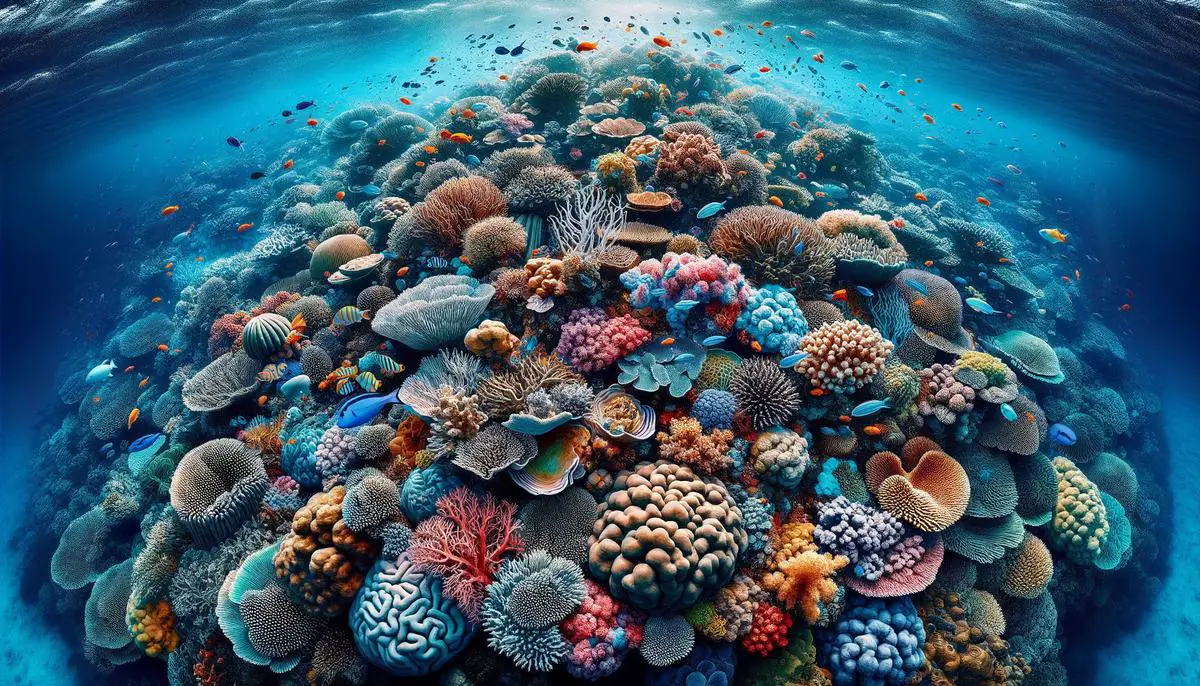Geographical Extent
The Pacific Ocean, boasting an area of approximately 64 million square miles (166 million square kilometers), stretches from the Bering Sea in the north to the Southern Ocean encircling Antarctica in the south. To the east, it meets the western coastlines of the Americas, from Alaska to the southern tip of Chile. On the western frontier, it touches the shores of East Asia and Australia.
The Pacific is divided into the North and South Pacific by the Equator. The North Pacific Ocean covers the expanse from the North American west coast to East Asia, while the South Pacific Ocean extends from the Equator to Antarctica.
The North Pacific Subtropical Gyre, a vast system of ocean currents, plays a key role in the distribution of plastic waste, notably the Great Pacific Garbage Patch drifting between Hawaii and California.1
Numerous landmasses border the Pacific Ocean. To its east lie the coastlines of North and South America. The Asian continent, including Russia, Japan, and the Philippines, forms its western boundary. Australia is the southwest boundary, while the waters around New Zealand merge with the Pacific to the southeast.
The ocean's surface features several notable elements. The Western Pacific is lined with volcanic islands shaped by the Ring of Fire's tectonic activities. The eastern section, although less mountainous, contains fracture zones parallel to the Americas' coasts and the East Pacific Rise, part of the Mid-Oceanic Ridge forming underwater mountain chains.
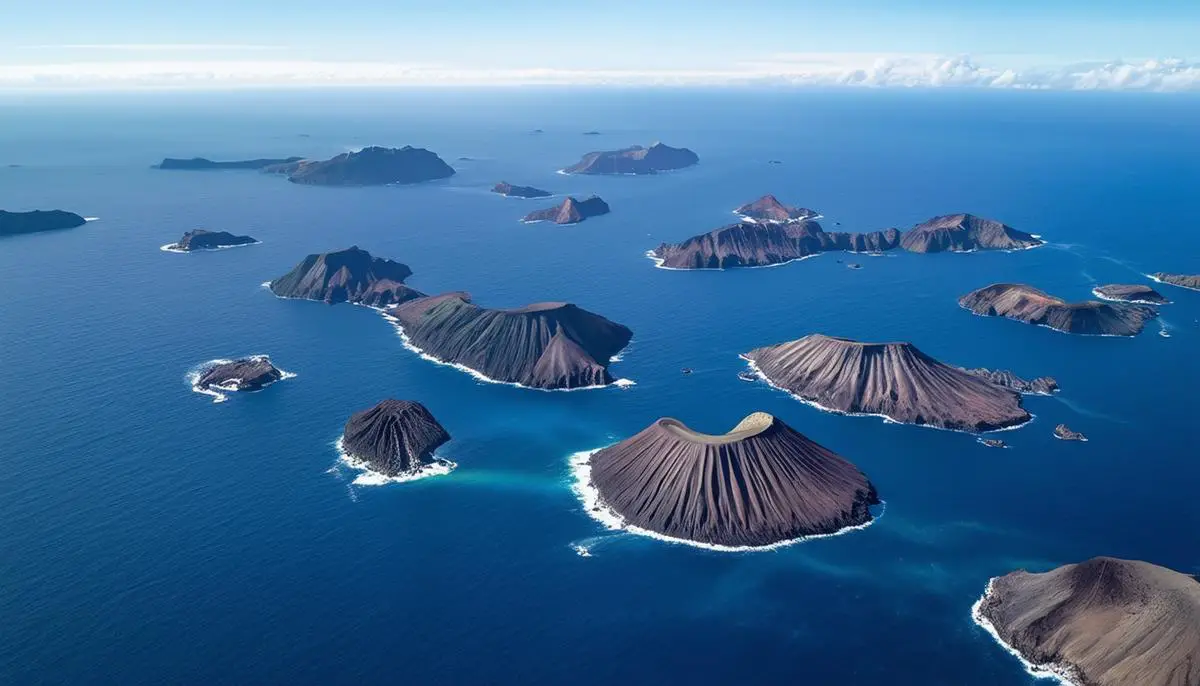
Key Features
The Pacific Ocean holds the title of the world's deepest ocean basin, with an average depth of 4,000 meters (13,000 feet). It is home to the Mariana Trench, plunging to approximately 36,000 feet (11,000 meters) at its deepest point, Challenger Deep.
Covering more than 155 million square kilometers (60 million square miles), the Pacific is notably larger than all of Earth's landmasses combined and contains almost twice the volume of water as the Atlantic Ocean.
The Pacific Ocean floor is shaped largely by plate tectonics. The Pacific Plate, the largest tectonic plate, underlies much of the ocean, interacting with smaller plates at its boundaries. This plate movement creates an array of trenches parallel to the coasts of continental landmasses.
An estimated 20,000 undersea volcanoes populate the Pacific floor, forming ridges that occasionally peak above the surface as islands. The Hawaiian Islands are an example of a series of volcanic islands resulting from the Pacific Plate's movement over a hotspot.
Numerous fracture zones, notably in the eastern half, slice through the Pacific floor parallel to each other. The East Pacific Rise, a segment of the Mid-Oceanic Ridge stretching roughly parallel to South America's coast, is intersected by multiple fracture zones.
The Pacific Ocean's size and depth allow it to host the planet's most extensive flat regions—the abyssal plains. These vast, featureless basins are cradled by underwater rises, continental shelves, and ridges.
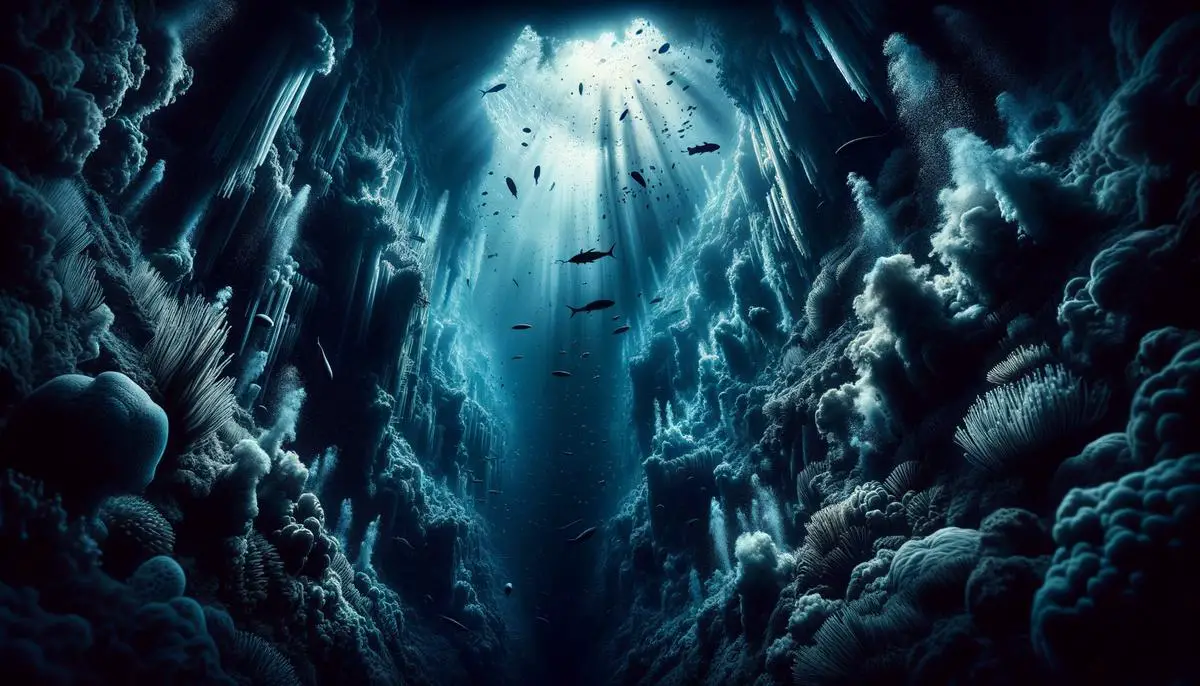
Natural Resources and Hazards
The Pacific Ocean is a treasure trove of natural resources and a hotspot for natural hazards. Beneath its surface lie abundant reserves of oil and natural gas, particularly along the continental shelves. These hydrocarbon deposits are crucial for meeting the world's energy demands, with major extraction sites in regions like the South China Sea and the North Pacific.
The Pacific also hosts vast fields of polymetallic nodules scattered across its abyssal plains. These nodules, rich in metals like manganese, nickel, copper, and cobalt, represent a potential source for future mining endeavors. However, the impact of deep-sea mining on delicate marine ecosystems remains largely unknown.
Fishing is another cornerstone of the Pacific's natural resources, supporting countless communities along its coasts. The nutrient-rich waters are home to some of the world's most productive fisheries, including tuna, mackerel, and sardine stocks. However, overfishing poses a significant threat, necessitating stringent management practices to ensure sustainability.
The Pacific Ocean's geological activity presents considerable natural hazards. The Pacific Ring of Fire, encircling the ocean, is notorious for its intense seismic and volcanic activity, accounting for approximately 90% of the world's earthquakes and 75% of its volcanoes.2 Tectonic movements generate frequent and sometimes devastating earthquakes, like the 1960 Valdivia earthquake in Chile, the most powerful recorded in history.
Volcanic eruptions within the Ring of Fire, such as Mount St. Helens in 1980 and Mount Pinatubo in 1991, highlight the destructive power of these geological events. Eruptions can lead to widespread ashfall, pyroclastic flows, and long-lasting ecological impacts.
Seismic activity in the Pacific often triggers tsunamis, towering waves that can travel across ocean basins at high speeds. Coastal communities from Japan to Chile have implemented robust tsunami preparedness measures to mitigate future risks.
Balancing resource extraction with environmental conservation and disaster preparedness is essential to safeguard both the prosperity and safety of those who depend on this vast and dynamic ocean.
Climatic Influences and Ocean Currents
The Pacific Ocean's vast surface area makes it a major player in Earth's climate system, driving weather patterns and oceanic movements that impact regions far beyond its shores.
Trade winds, westerly winds, and monsoons are three significant atmospheric patterns influenced by the Pacific:
- Trade winds blow from the subtropical high-pressure areas towards the Equator, driving equatorial currents and contributing to the consistent flow of warm surface waters westward across the ocean.
- In the middle latitudes, westerly winds blow from west to east, contributing to eastward-flowing currents in the higher latitudes of the Pacific. They moderate the climate of continental coastal regions, such as the western coast of North America, by transporting moist, marine air inland.
- Monsoons, particularly in the western Pacific, bring wet and dry seasons to regions like Southeast Asia and northern Australia. During summer, moist oceanic winds blow inland, bringing heavy rains and sometimes driving tropical cyclones. In winter, cooler, dry air flows seaward, leading to drier conditions over land.
The Pacific Ocean's surface currents form intricate systems that redistribute heat and influence climatic conditions globally:
- The North Pacific Gyre, driven by trade winds and westerlies, includes currents such as the warm Kuroshio Current flowing north along the east coast of Japan, moderating climate similarly to the Gulf Stream in the Atlantic. The Kuroshio transitions into the North Pacific Current, heading eastward before splitting into various branches, including the cold California Current traveling south along the western United States coast.
- The South Pacific Gyre operates in a counter-clockwise direction, driven by the southward flowing East Australian Current and the cold Humboldt (Peru) Current moving north along the western coast of South America. These currents regulate temperature and ecological productivity in the regions they flow through.
El Niño, a significant climatic phenomenon influenced by the Pacific Ocean, occurs when surface waters in the eastern Pacific near the equator abnormally warm. Typically, trade winds drive warm waters westward, accumulating in the western Pacific. During an El Niño event, these trade winds weaken, allowing warm water to shift eastward, disrupting weather patterns globally and leading to severe weather events. The ecological and economic impacts of El Niño are wide-ranging, affecting fisheries, agriculture, and human health.
Conversely, La Niña represents the opposite phase, with stronger-than-normal trade winds pushing warm waters further westward, increasing upwelling of cold, nutrient-rich waters in the eastern Pacific. This can lead to cooler-than-average temperatures in the Pacific and influence global weather patterns.
The interconnected nature of the Pacific Ocean's climatic influences and ocean currents underscores its pivotal role in Earth's climate system. Through its vast size and dynamic processes, the Pacific continually shapes weather patterns and oceanic conditions, demonstrating the delicate balance between atmospheric and oceanic forces that sustain life on our planet.
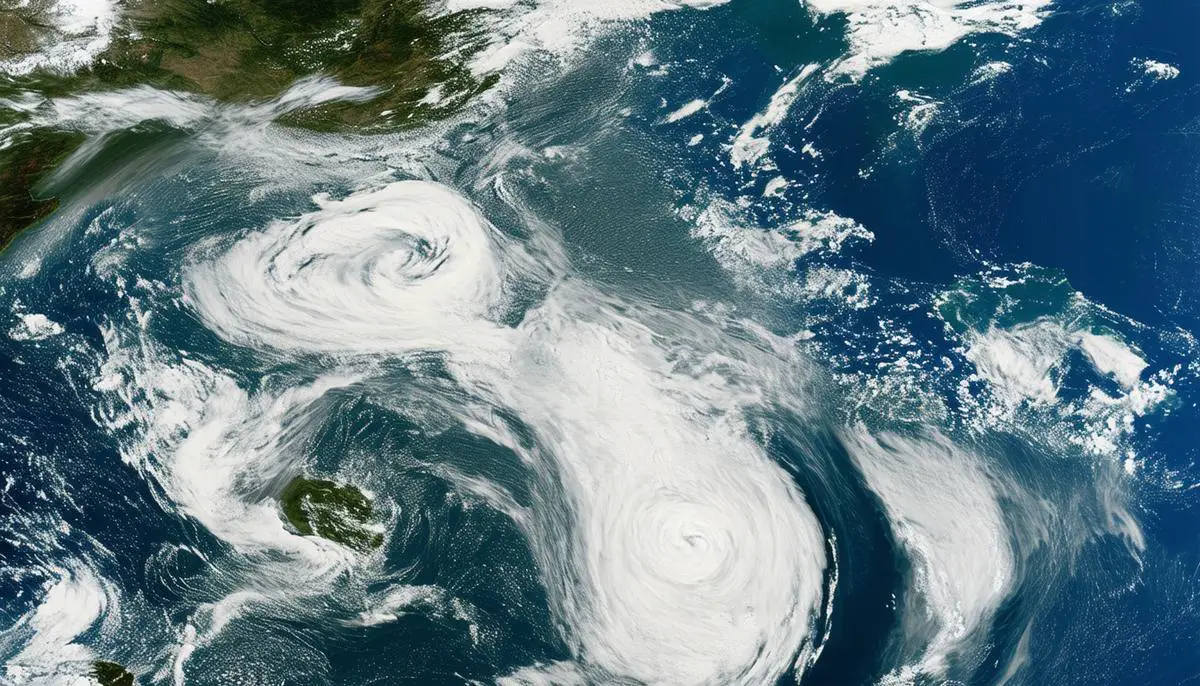
Environmental Concerns
The Pacific Ocean faces numerous environmental challenges that threaten its ecosystems and the intricate web of life it supports. Pollution, overfishing, habitat destruction, and climate change each play a part in altering the delicate balance that maintains the vitality of this vast marine sanctuary.
Plastic waste, epitomized by the infamous Great Pacific Garbage Patch, is a visible and concerning form of pollution in the Pacific. This floating mass of debris, primarily composed of microplastics, covers an area estimated to be 1.6 million square kilometers—roughly twice the size of Texas.1 Microplastics pose an insidious threat to marine life when ingested, leading to physical harm and potentially lethal blockages. Additionally, plastics can act as carriers for hazardous chemicals, introducing toxins into the marine food web.
Ghost nets, abandoned or lost fishing gear, exacerbate the problem by indiscriminately trapping marine life, leading to entanglement and death. This phenomenon affects targeted fish species and ensnares mammals, birds, and turtles, inflicting severe ecological damage.
Overfishing is another critical issue afflicting the Pacific. Intensive and often unregulated fishing practices have diminished stocks of key species, disrupting marine food chains and altering ecosystem dynamics. Illegal, unreported, and unregulated (IUU) fishing exacerbates this problem, making it difficult to enforce conservation measures and manage fish populations sustainably.2 Efforts to establish marine protected areas (MPAs) and enforce sustainable fishing practices are crucial steps toward restoring balance.
Habitat destruction, fueled by coastal development, pollution, and destructive fishing practices, poses additional threats to the Pacific's biodiversity. Coral reefs, mangroves, and seagrass beds are particularly vulnerable. The loss of these habitats results in decreased biodiversity and diminished capacity for ecosystems to provide essential services, such as carbon sequestration and shoreline protection.
Climate change compounds these challenges through phenomena like ocean acidification and warming. As the ocean absorbs atmospheric carbon dioxide, increased acidity disrupts the ability of marine organisms to form calcium carbonate structures.3 Ocean warming intensifies storms, alters ocean currents, and causes coral bleaching, leading to mass die-offs if stressful conditions persist.
Addressing these environmental challenges requires comprehensive and collaborative conservation efforts. This includes:
- Reducing plastic use
- Improving waste management
- Enforcing sustainable fishing practices
- Protecting and restoring habitats
- Mitigating the effects of climate change through global cooperation
By embracing a holistic approach to ocean stewardship, we can work to ensure that the Pacific Ocean remains a vibrant and resilient component of our planet's environmental heritage.
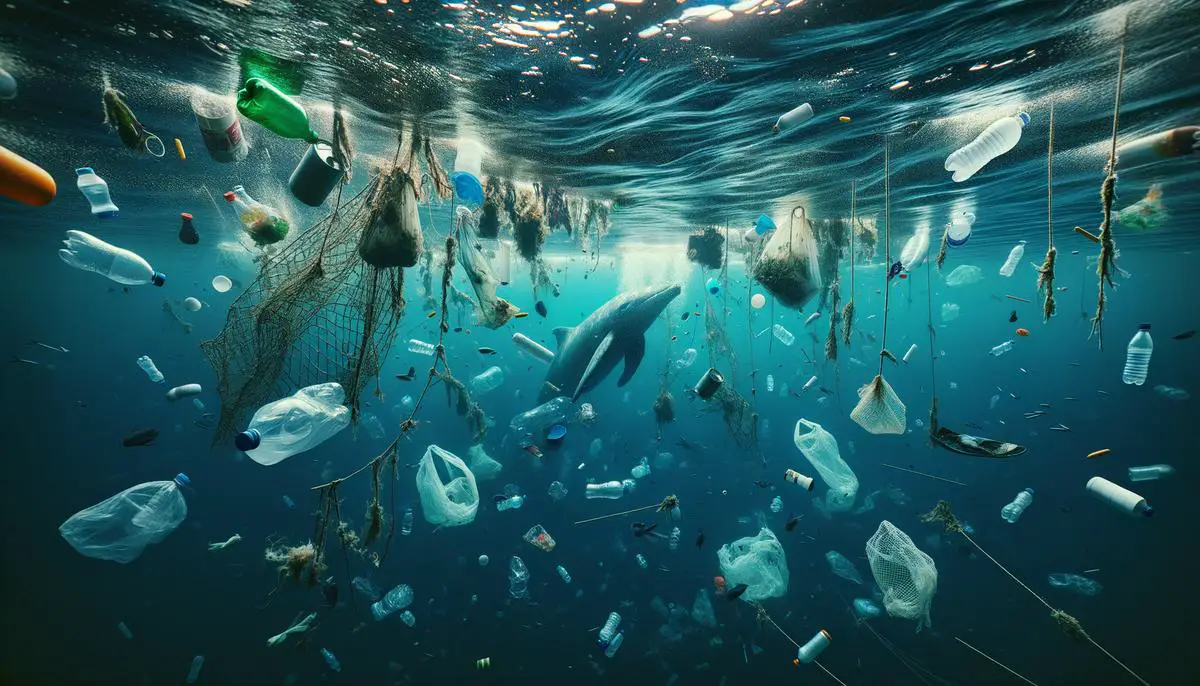
Human Impact and Conservation Efforts
Industrial fishing, driven by the growing global demand for seafood, exerts tremendous pressure on marine populations. Overfishing has led to the depletion of key species, while bycatch leads to the waste of millions of tons of marine life annually. The decline in fish populations disrupts marine food webs, affecting entire ecosystems and the livelihoods of communities dependent on sustainable fisheries.
Deep-sea mining presents another emerging threat to the Pacific Ocean. This practice involves extracting valuable minerals from the ocean floor, disturbing the ocean bed, releasing sediments that can smother marine habitats, and disrupting delicate ecosystems. The long-term impacts of deep-sea mining on the ocean's health remain largely unknown.
Fossil fuel burning and the resulting carbon emissions contribute significantly to climate change and ocean acidification. The ocean absorbs a substantial portion of atmospheric carbon dioxide, leading to chemical reactions that lower pH levels. This acidification affects marine organisms, particularly those with calcium carbonate shells or skeletons, threatening biodiversity and the stability of marine ecosystems.
In response to these human-induced challenges, various conservation efforts and initiatives are underway:
- International agreements provide frameworks for protecting marine biodiversity and regulating human activities in the ocean.
- Marine Protected Areas (MPAs) restrict certain activities within designated zones to safeguard ecosystems, preserve biodiversity, and allow fish populations to recover.
- Sustainable fishing practices are being promoted through regulations and certifications, ensuring that seafood products are sourced in ways that do not harm the environment.
- Organizations work to manage fish stocks, implementing measures to combat overfishing and illegal, unreported, and unregulated (IUU) fishing.
Technological advancements play a crucial role in conservation efforts, enabling better surveillance of fishing activities and reducing bycatch. Research and monitoring programs provide critical data on ocean health, guiding policy decisions and conservation strategies. Community involvement and traditional knowledge are increasingly recognized as vital components of effective conservation, fostering stewardship and ensuring that practices are culturally relevant and ecologically sound.
Public awareness and education are essential for driving change and supporting conservation efforts. Campaigns to reduce plastic use, promote sustainable seafood, and advocate for marine conservation highlight the importance of individual and collective actions.
By embracing a multifaceted approach that includes regulatory frameworks, technological innovation, community engagement, and public awareness, we can work toward preserving the Pacific Ocean's health and resilience, ensuring that future generations can continue to benefit from its invaluable resources and ecosystems.
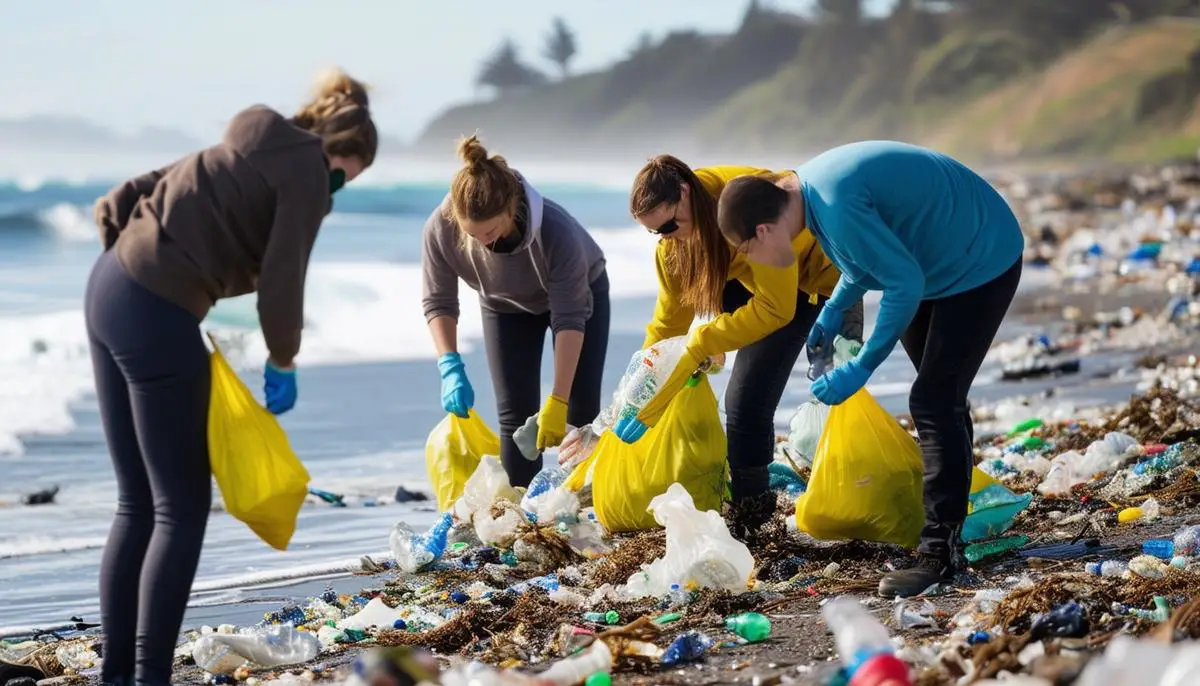
The Ring of Fire
The Pacific Ocean's "Ring of Fire" is a striking and formidable feature that encircles this vast body of water. It is a horseshoe-shaped zone of high volcanic and seismic activity that stretches from the tip of South America, up the western coast of North America, across the Bering Strait, down through Japan, the Philippines, and Indonesia, before skirting the eastern edges of the Pacific back to New Zealand and the southern Pacific islands.
This region is aptly named due to the frequent occurrence of both volcanic eruptions and earthquakes, engendered by the dynamic nature of the tectonic plates underlying the Pacific Ocean. Around 90% of the world's earthquakes and the majority of the planet's active volcanoes are located here, making it one of the most geologically active areas on Earth.4
The driving processes behind the Ring of Fire are primarily tectonic subductions, where one tectonic plate is thrust beneath another into the mantle. As the oceanic plates move, they collide with continental plates, descend into the Earth's interior, and generate intense pressure and heat. This results in the melting of rock and the formation of magma, which can lead to volcanic eruptions when it reaches the surface.
Volcanic activity in the Ring of Fire manifests in a variety of ways. Stratovolcanoes, characterized by their steep profiles and periodic explosive eruptions, dominate many parts of this region. These volcanic eruptions can be devastating, expelling vast quantities of ash, lava, and gases into the atmosphere, which can affect global climate.
Earthquake activity in the Ring of Fire is equally significant and often catastrophic. The stress accumulated by the subducting plates occasionally releases in the form of earthquakes. The constant tectonic movement makes the areas along the Ring of Fire particularly vulnerable to both ground shaking and secondary hazards like tsunamis.
The existence of the Ring of Fire profoundly impacts the lives of the millions of people who live along this fiery arc. Countries have adapted to the constant threat of volcanic eruptions and earthquakes with advanced monitoring and preparedness systems. Early warning systems, strict building codes, and public education campaigns are critical components of disaster risk reduction in these regions.
Seismology and volcanology research continue to be crucial fields of study, as understanding the behavior of tectonic plates and the geology of subduction zones can help predict and mitigate the impacts of natural disasters. Innovations in technology provide valuable data that enhance our ability to monitor these hazards closely.
The ecosystems and geological formations associated with the Ring of Fire are unique and carry significant scientific interest. Volcanic soils are typically rich in minerals, making them highly fertile and supportive of diverse plant life. Hydrothermal vents along the ocean floor in these regions host various exotic life forms, adapted to extreme conditions, offering insights into biodiversity and the origins of life.
The Pacific Ocean's Ring of Fire is a dynamic testament to Earth's volatile tectonic nature. Its persistent volcanic and earthquake activity shapes not only the geology of the surrounding regions but also the lives and societies that reside there. Continuous advancements in scientific understanding and disaster preparedness are vital in respecting and coexisting with this planetary powerhouse.
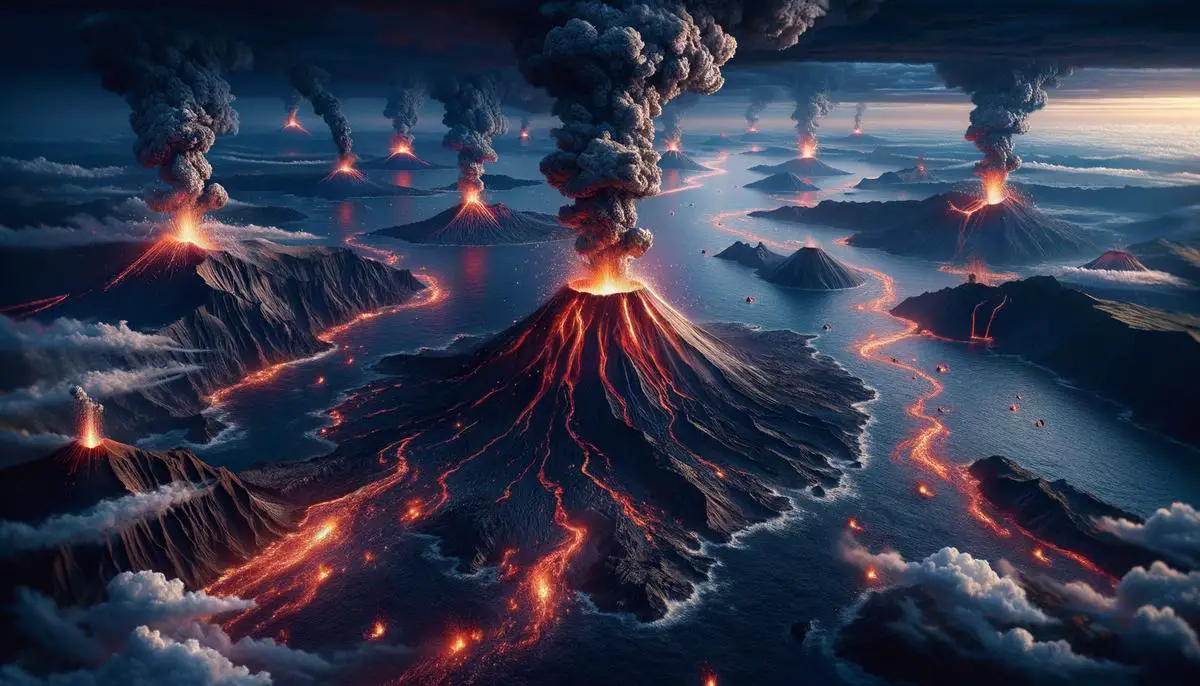
The Pacific Ocean stands as an integral component of Earth's environmental heritage. Its immense size, diverse ecosystems, and crucial role in climate regulation underscore its importance. By understanding its features and addressing environmental challenges through sustainable practices, we can help preserve this vital ocean for future generations.
![]()
